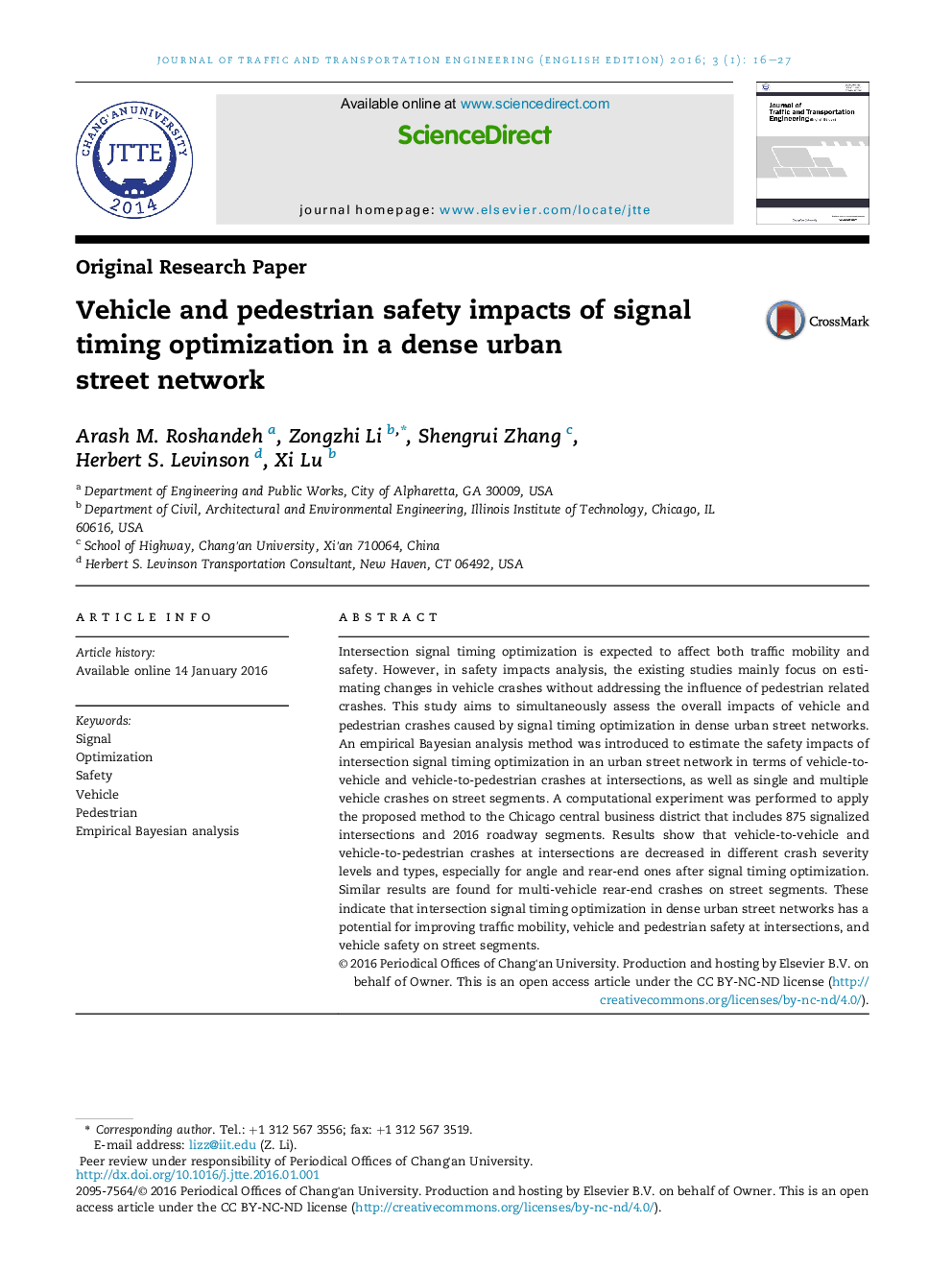| Article ID | Journal | Published Year | Pages | File Type |
|---|---|---|---|---|
| 292758 | Journal of Traffic and Transportation Engineering (English Edition) | 2016 | 12 Pages |
Intersection signal timing optimization is expected to affect both traffic mobility and safety. However, in safety impacts analysis, the existing studies mainly focus on estimating changes in vehicle crashes without addressing the influence of pedestrian related crashes. This study aims to simultaneously assess the overall impacts of vehicle and pedestrian crashes caused by signal timing optimization in dense urban street networks. An empirical Bayesian analysis method was introduced to estimate the safety impacts of intersection signal timing optimization in an urban street network in terms of vehicle-to-vehicle and vehicle-to-pedestrian crashes at intersections, as well as single and multiple vehicle crashes on street segments. A computational experiment was performed to apply the proposed method to the Chicago central business district that includes 875 signalized intersections and 2016 roadway segments. Results show that vehicle-to-vehicle and vehicle-to-pedestrian crashes at intersections are decreased in different crash severity levels and types, especially for angle and rear-end ones after signal timing optimization. Similar results are found for multi-vehicle rear-end crashes on street segments. These indicate that intersection signal timing optimization in dense urban street networks has a potential for improving traffic mobility, vehicle and pedestrian safety at intersections, and vehicle safety on street segments.
